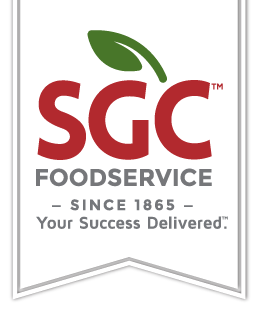Assisted living facilities have recognized the importance of providing an exceptional meal experience for their residents. With a growing focus on enhancing quality of life, these facilities are stepping up to create dining environments that go beyond the norm. There have been some places that are really turning up the notch when it comes to taking care of their residents, food wise. Explore this rising trend of assisted living facilities adding to their resident's meal experience. From farm-to-table initiatives and restaurant-style dining to culinary engagement programs and personalized menus, these innovative approaches are revolutionizing how residents enjoy their meals, nourishing their bodies and uplifting their spirits.
Farm-to-Table Initiatives
To ensure residents receive fresh and nutritious meals, some assisted living facilities are incorporating farm-to-table initiatives. They establish partnerships with local farmers or cultivate their own on-site gardens to source high-quality, seasonal produce. This not only guarantees the freshness of ingredients but also supports local communities. By incorporating farm-fresh fruits, vegetables, and herbs into their menus, facilities can offer residents flavorful and nutrient-rich meals while promoting sustainability and environmental consciousness. By doing so, the wait time on their orders go down as they are giving their money to local businesses that are near. Not having to wait long for product to come in, boosts the productivity of the workers too. These healthier options are significantly impacting the nutrition for the residents and are becoming more and more common in the dining facilities.
Restaurant-Style Dining
Assisted living facilities are shifting away from traditional cafeteria-style dining to embrace a more restaurant-style approach. They create inviting dining spaces with comfortable seating arrangements, elegant table settings, and ambient lighting. Trained waitstaff cater to residents, taking orders and serving meals with personalized attention. This shift from institutionalized dining to a more intimate and refined experience elevates residents' sense of dignity, promotes social interaction, and allows for a heightened culinary experience. Giving the residents a chance to feel somewhere other than the place they see every day is important. Being able to “go out to dinner” is something special for everyone, so giving that opportunity to the people who are in assisted living homes is a great deal. You can get very creative with these eating areas as there can be themed nights, holiday celebrations, special decorating and more! With the certain themes or celebrations, the menu can be updated and fit to the occasion of the night, allowing residents to taste and feel the authentic vibe of the restaurant. This even gives the chef a way to have fun with what the kitchen is serving up rather than everything being so constant.
Culinary Engagement Programs
Recognizing the joy and therapeutic benefits of cooking, some assisted living facilities are introducing culinary engagement programs. These programs encourage residents to actively participate in meal preparation, such as assisting with meal planning, recipe selection, and even cooking under the guidance of trained chefs. By involving residents in the kitchen, facilities empower them, promote a sense of purpose, and stimulate cognitive function. Culinary engagement programs foster a deeper connection with food and create a sense of pride and accomplishment as residents savor the meals they helped create. Before, many of these residents were cooking meals of their own and then when they left that independent living style, preparing meals was something they lost. These types of programs give these residents the opportunity to participate in doing what used to be normal to them.
Personalized Menus and Dietary Preferences
Assisted living facilities are prioritizing individualized care by offering personalized menus and accommodating dietary preferences. They conduct thorough assessments of residents' nutritional needs and work with registered dietitians to develop customized meal plans. These plans consider specific dietary restrictions, allergies, cultural preferences, and personal tastes. By providing a range of menu options and alternatives, facilities ensure that residents can enjoy meals tailored to their unique requirements, promoting satisfaction and overall well-being. This tends to heighten the experience of the residents when they are eating their foods. It allows them to feel more important and taken care of when the meal is designed for them versus a generic “one meal fits all” type of approach.
It is crucial for these organizations to be increasing their focus on the enhancement of the meal experience for their residents. Acknowledging the vital role it plays in their overall quality of life is important because these meals are what help fuel the bodies of the residents. From farm-to-table initiatives and restaurant-style dining to culinary engagement programs and personalized menus, these facilities are revolutionizing the way residents experience meals. These initiatives reflect a commitment to providing exceptional care and fostering a sense of dignity, joy, and community within these living environments.

_izl9p11s.jpg)